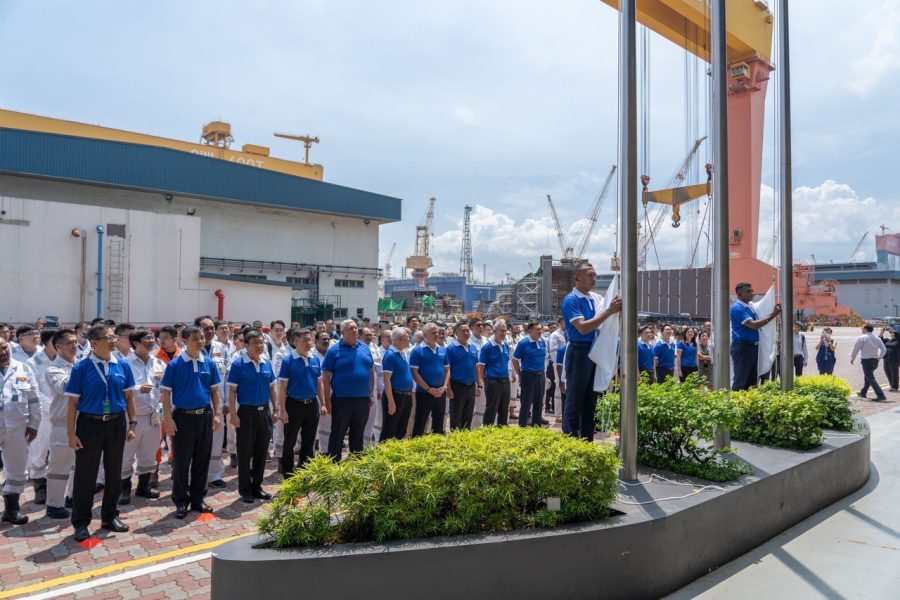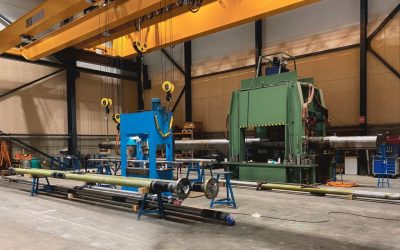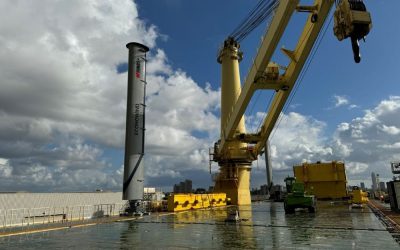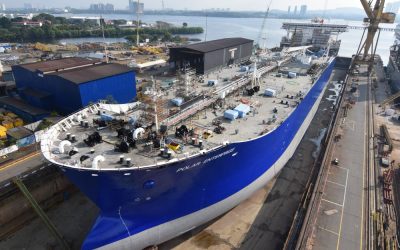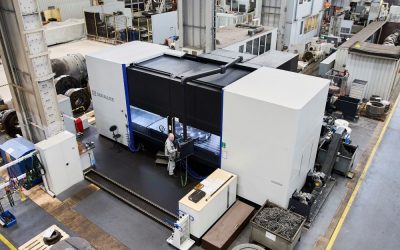The newly launched Seatrium brings together the established capacity and prowess of Sembawang and Keppel and is likely to be a pioneer in the introduction of smart technology within the shiprepair yard sector, writes Clive Woodbridge
For years both Sembawang and Keppel have been major players in the global ship repair business, not just from their home bases in Singapore, but through partnerships at yards worldwide, including the Middle East and the Americas for example.
Various factors, including a desire for greater economies of scale, have pushed the two parent groups together and earlier this year Keppel Offshore and Marine was inserted into the Sembawang group. Now a new entity, called Seatrium, has been created from the amalgamation of the two operations and is certain to be a major influence on ship repairs and conversion in a number of different sectors, with a large market share for example in LNG and cruise ship work, as well as FPSO and FSO related activities.
Seatrium will control some seven yards in Singapore alone, which have a mix of newbuilding, offshore and ship repair related workloads. The new name was officially confirmed at the recent Sea Asia event and begins a marketing initiative to relaunch the business to a global customer base.
One area where Seatrium looks likely to be particularly influential, and to have a strong competitive advantage, is in the development of smart shipyard technology. In the ship repair sector this includes systems to enable and facilitate remote surveys and inspections. This area of influence was underlined at Sea Asia by the signing of an agreement with ABS which has joined forces with Seatrium on a number of digital initiatives.
Recently ABS launched detailed requirements to guide the industry in the application of smart technologies at shipyards, and recognises Seatrium as the first shipyard group to deploy smart technologies in its operations, in line with the ABS Guide for Smart Technologies for Shipyards. Seatrium’s Mobile Wearable Personal Device (MWPD) monitoring system, which uses internet of things and platform technologies, has also received Product Design Assessment approval from ABS.
The MWPD system is integrated into smart devices that are deployed shipyard wide by Seatrium. These are worn on the wrists and promise to enhance the overall health and safety of shipyard workers with features like fall detection; geo-location; emergency connectivity; and real-time safety notifications. The devices can be monitored via a command centre to help improve response time to emergencies and deploy safety messages more effectively.
ABS and Seatrium will also collaborate on further smart yard initiatives covering a wide range of innovative digital solutions, such as remote inspections using smart glasses with 5G technology to enhance the surveying process. Since 2022, Seatrium has launched the 5G infrastructure across its yard operations to enable the trial and deployment of an augmented reality (AR) and virtual reality (VR) remote inspection platform and smart video analytics.
Demand for remote surveys and inspections has levelled off a little post-pandemic, as might have been expected. But this is the future and those yards which are geared up to facilitate this work and are able to feed into shipowners’ digitalisation projects, such as lifelong digital twin vessels, are likely to have a strong edge on their rivals.
In Seatrium’s case one strategic long-term aim of the merger is providing a viable, high-tech alternative to the Chinese shipyards on their doorsteps. These yards have gone through a challenging period with the tough Chinese government policy on lockdowns, and this has given others a window of opportunity to press the case for lesser dependence on Chinese capacity.
In recent months though there are signs that Chinese ship repair is on the way back. The major Chinese ship repair yards repaired 995 vessels in the first quarter, an increase of 3.4% year-on-year, which is a modest, but significant degree of recovery.
Seatrium is one player that will have the capacity, and the technical strengths, to give owners and operators a realistic alternative in the Asian region. It is certainly going to be an interesting commercial contest over the next few years, particularly as Seatrium ramps up its smart shipyard offerings.
